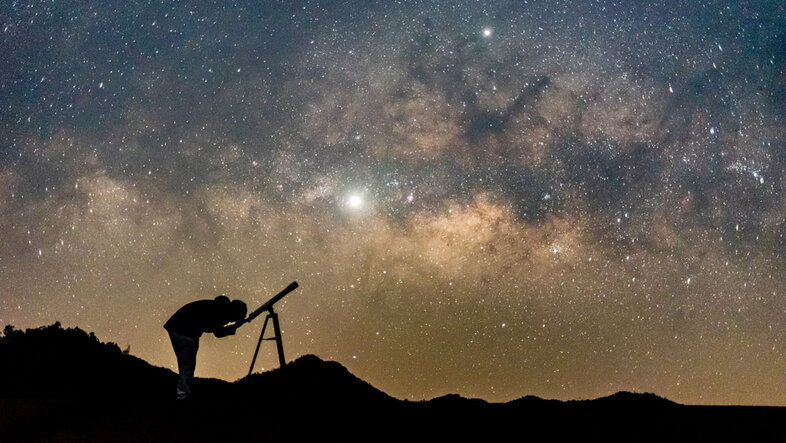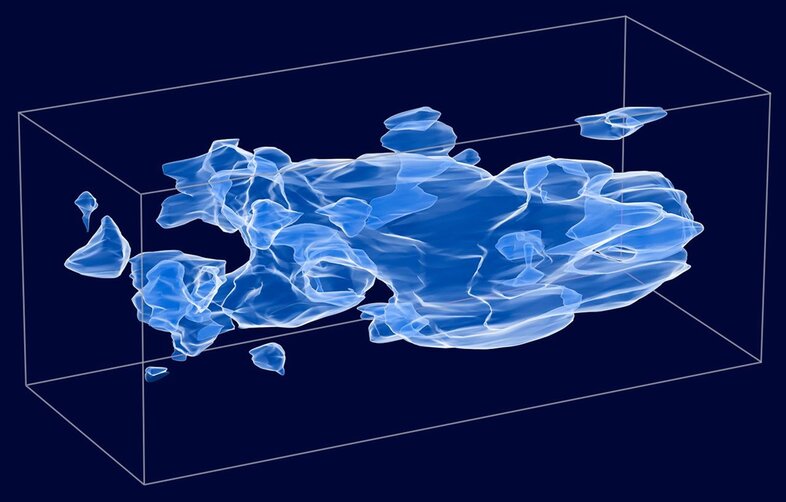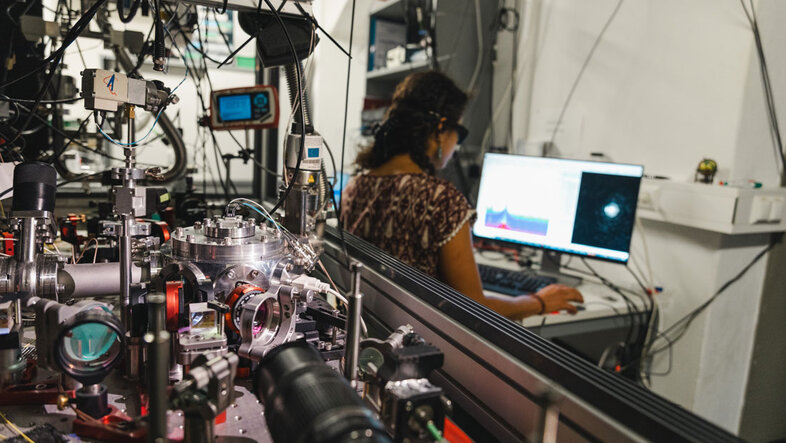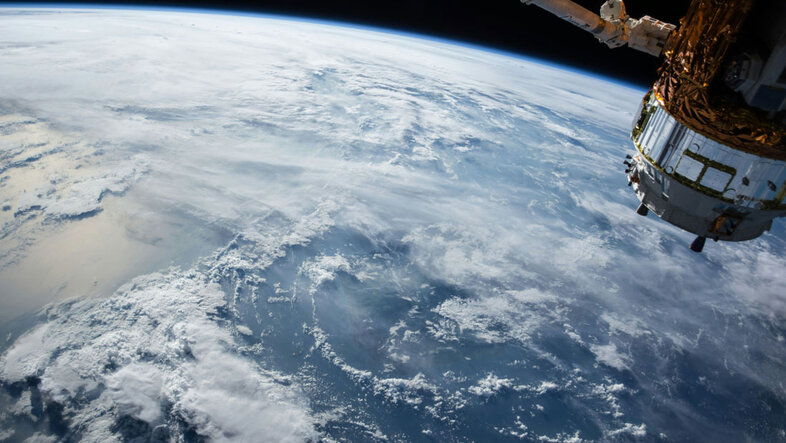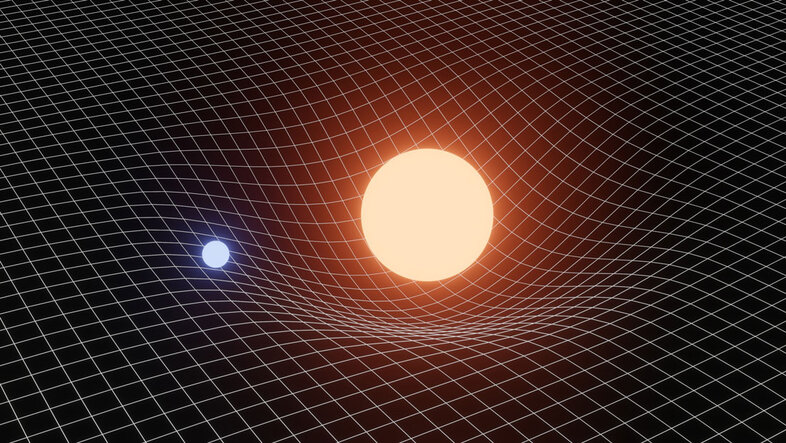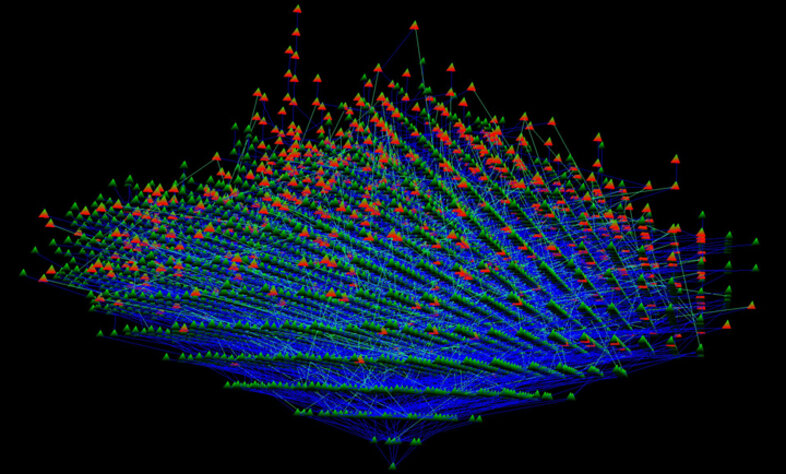From the vast to the tiny
You would not guess it from a student dorm kitchen, but the human mind craves order. By finding patterns in the chaos, we make sense of the world. Scientists aim to identify the unifying principles that reveal the connections between seemingly unrelated phenomena. In the 17th century, Isaac Newton realised that the same gravitational force that makes raindrops fall from the sky also accounts for the Moon’s orbit around the Earth.
The Standard Model: Bringing together the forces of nature
Later, physics would celebrate even more successes in its quest to fit the fundamental forces of nature into a comprehensive scientific world view. Some 200 years after Newton, James Maxwell unified electricity and magnetism, which had until then been considered completely distinct. Today, his description of electromagnetism is dubbed "the second great unification of theories" in physics, exemplifying how seemingly separate forces can be brought together in a common explanation.
With the rise of Einstein's theory of relativity and quantum theory in the early 20th century, all hell broke loose in physics, exposing the limits of firmly established concepts like the determinism of classical Newtonian mechanics.
Nevertheless, physics kept calm and carried on unifying theories. By combining Einstein's special relativity with quantum physics, quantum field theory was born. It describes particles as ripples in underlying fields, like waves in an ocean. Quantum field theory forms the basis of what is known as the "Standard Model of particle physics", an extremely accurate theory that maps out the building blocks of matter, their interactions, and the forces between them.
Josef Pradler, theoretical particle physicist at the University of Vienna underlines the importance of our most comprehensive unifying theory to date. "The Standard Model underpins essentially all observed non-gravitational phenomena," he says. Whether it is nuclear fusion in stars, the decay of radioactive atoms, or the emission of photons from a light bulb, the Standard Model is the go-to theory for understanding a wide range of processes. It even predicted the Higgs boson, a particle that is thought to give other particles mass and which was eventually detected in 2012.
However, the Standard Model is far from finished business – and our limited understanding of the very small becomes especially evident when we consider the very large.
A Quantum of Knowledge: What is a Theory?
In this article, you frequently come across "theories" that “explain" certain phenomena. In science, a theory is not just a guess ‒ it is a well-supported explanation of aspects of the world, grounded in solid experimental evidence.
A good theory should predict outcomes that one can test. In 1758, Newton's theory of gravity was used to correctly predict the return of Halley’s Comet. To this day, it is sufficient to calculate almost all the movements of celestial bodies in the solar system. In short, a good theory works by the motto: If you can make accurate predictions, you truly understand the underlying principles.
Dark Matter: More than meets the eye
For one, there seems to be more matter in the universe than current physics can explain for, says Pradler. "There is a mismatch between the amount of matter we can see and the amount we know must be there based on how the celestial bodies move in space. Whether it is stars orbiting in galaxies or galaxies moving within clusters ‒ it does not add up." Also, the structure of the universe and its accelerating expansion can only be understood if there is more to it than meets the eye – both in terms of matter and unknown forces.
There are two logical solutions to the riddle. Either Einstein's theory of gravity, general relativity, is flawed, or there is an unknown type of matter – dubbed "dark matter" by physicists ‒ in the universe. "Current understanding seems to favour the latter", says Pradler.
About 85 percent of the matter in the universe is thought to be dark matter. And yet it is unclear what it is made of: "We can guess what these particles could be like. They need to have mass, they need to be electrically neutral – but they have never been detected," explains the physicist.
Together with his research group, Josef Pradler is attempting to lay the theoretical groundwork for new discoveries in dark matter research. "By making cautious extensions to the Standard Model, we develop new models for dark matter and compare them to existing data – be it from telescopes or from underground detectors – where they hope to detect traces of dark matter particles. In doing so, we refine the predictions for experiments that aim to detect dark matters constituents," he explains. Whatever the nature of particles that make up dark matter, they would be new additions to the "particle zoo" of the Standard Model.
His research group develops theoretical models, tests them for their cosmological and astrophysical consistency and work out methods and predictions for experimental proof.
Probing the boundaries of the quantum world
Another area where the Standard Model falls short is the problem of quantum gravity. While the other fundamental forces are described by the quantum-based Standard Model, gravity refuses to fit in. Without knowing if a quantum description of gravity can hold, our understanding of nature’s laws remains incomplete.
The need to unify the two theories is revealed, for example, when looking at extreme cosmic objects, states Josef Pradler: "Take black holes: They are described, and were even predicted, by general relativity. But we don't know what happens inside them on the smallest scale, the quantum level. Describing this requires a theory that unites gravity and quantum physics."
Such a theory would need experimental validation. However, the extreme conditions inside a black hole or just after the Big Bang are impossible to recreate in the lab. Here on Earth, gravity and the infinitesimal quantum objects usually do not get in each other's way, says Salambô Dago, postdoctoral researcher in the group of Markus Aspelmeyer. "You need quantum physics to describe the world of the smallest particles like electrons and photons. At that scale, gravity is negligible." This makes it very difficult to design an experiment in which both the effects of quantum physics and gravity can be observed ‒ for example, when gravity causes two particles to become entangled. In order to understand such a process a unified theory of gravity and quantum physics would be required.
It is these kinds of questions that occupy Salambô Dago and other researchers in the Aspelmeyer group ‒ and they are performing a balancing act: Their aim is to create quantum states with objects massive enough to be subject to gravity, but just small enough to still show quantum behaviour in laboratory conditions. "With atoms, working with quantum states is easy, because they belong to the quantum realm", states Dago. "But we are trying to do this with particles on the nanometre scale, many times bigger than an atom."
In a delicate experimental setup, the research team attempts to place a tiny particle made of glass into a quantum state. The particle must be isolated from any interaction with the environment as such contact would destroy the quantum state. To do so, the particles are placed in an ultra-high vacuum, cooled to near absolute zero, and held in place using only electromagnetic fields. Using precision optical analysis, the researchers then check whether the system is in a quantum state.
Then comes the big question: Is the quantum state preserved when the system experiences gravity? "If the answer is no, it would suggest that the realms of gravity and quanta cannot be unified," Dago explains. That would raise some intriguing follow-ups: Is there, for example, a clear boundary between the two? "It could also point to the possibility that gravity or quantum theory, or both, are incomplete or incorrect," says the physicist.
"But if the answer were yes, it would mean that gravity must, in some way, be compatible with quantum theory. That would challenge theoretical physicists to come up with a model that explains this result."
This would mark a key step forward. While there are many candidate theories that bring gravity under the roof of quantum theory, none of them has been experimentally confirmed yet. "Some think that quantum theory is simply incomplete, and that the theory of gravity does not need to change," says group leader Markus Aspelmeyer in the Rudolphina podcast (in German), Again, no experiment has yet proven this view right or wrong. "At the moment, it is an 'anything goes' situation," adds the quantum physicist. By pushing the limits of quantum physics and gravity in experiments, his group aims to gather the crucial evidence needed to point the way toward a solution to the quantum gravity conundrum.
Research Network TURIS: Bringing together gravity and the quantum world
The teams of Josef Pradler and Markus Aspelmeyer are part of the interdisciplinary "Research Network Quantum Aspects of Spacetime (TURIS)", which brings together theoretical physicists, experimentalists, and astrophysicists to study the interface between quantum physics and gravity. Founded at the University of Vienna in 2017, the network now includes collaborators from the Austrian Academy of Sciences. "This dialogue is crucial for our research, because often it is when different approaches come together that exciting ideas and results emerge," says Pradler.
She studied Physics in France, followed by a PhD in statistical physics of nano-objects in Lyon. Having received a prestigious Marie-Skłodowska Curie Postdoctoral Fellowship to support her research, she moved to the University of Vienna in 2022.
New maths for the "pixels" of spacetime
A conversation with Roland Steinbauer, mathematician and mathematical physicist at the University of Vienna, brings us back to the core problem of quantum gravity. "All approaches to a theory of quantum gravity assume that everything is fundamentally "quantum", even spacetime itself," he explains.
What this means takes us not one, but two steps beyond everyday intuition. First, spacetime is not an inert "stage" where particles move and all events take place. Einstein found out that spacetime itself is dynamic ‒ it bends and curves in response to the presence of mass and energy, thereby shaping how objects move in space. "There is no absolute, fixed background," says the mathematician. "And if we want to find a theory of quantum gravity, we must go one step further and introduce another weird feature: the dynamic stage itself – spacetime – is also 'quantitised.'" In this view, spacetime is not continuous, but instead consists of distinct indivisible "points". These are, in a sense, like "the pixels of space and time".
Steinbauer and his research team have developed an approach to mathematically describe such a "pixelated" reality. At the heart of their considerations lies the curvature of spacetime. Curvature is the fundamental concept in Einstein's theory of gravity. You can picture it like this: a heavy ball placed on a stretched sheet creates a dent ‒ it curves the sheet. Smaller balls moving across the sheet follow the paths dictated by this dent, much like planets follow the curvature of spacetime around a star. The greater the mass, the more spacetime is curved locally, and the stronger the resulting gravity. Gravity, then, is the consequence of spacetime being curved by mass. Thinking about gravity therefore requires a solid mathematical understanding of spacetime curvature.
It turns out that the notion of curvature in general relativity falls short in certain situations. "Take a star, for example," says Steinbauer. It has a very high mass density, but at its surface this density drops to zero. This abrupt change creates an unusual spacetime geometry, almost as though it had a 'corner.' We would say the spacetime is no longer 'smooth' there, but 'rough'. For such 'weird' geometries of spacetime, there is no established mathematical notion of curvature."
This is an old geometrical problem in our theory of spacetime. The research team is working on solving it with a promising approach. "We describe curvature in a much more general way than has been possible so far. Specifically, our mathematical notion of curvature works not only for 'normal' smooth spacetime, but also for 'rough' geometries," states Steinbauer.
The breakthrough lies in the fact that the maths also seamlessly works in both classical-continuous and pixelated spacetime, says the researcher. Thereby, this new geometry is poised to help physicists working on candidate theories for quantum gravity, such as Causal Set Theory (see image in gallery). "When we consider the smallest length scales of the quantum world, we can accurately describe spacetime curvature with our geometry. And it still works when we shift to the length scales of the classical world. So, we can use the same mathematical tools to talk about both realms."
In a similar manner, a sound theory of quantum gravity should bridge the classical world with the quantum world ‒ adding another success to physics' pursuit to describe nature with a few elegant theories.
Asked whether he thinks this day will arrive, Steinbauer pauses. "I think physicists have become more cautious about making promises in this regard. And it is realistic to consider that we may never see a complete theory of quantum gravity. However, the fact that we are not there yet does not mean that our existing theories are wrong – they have firmly withstood the test of time. I would say this shows one thing: the closer we look, the more there is still to discover."
Emerging Fields Project: A new Geometry for Einstein's Theory of Relativity and Beyond
Roland Steinbauer coordinates a team of five principal investigators within the project "A new Geometry for Einstein's Theory of Relativity and Beyond", which was awarded a highly endowed FWF Emerging Fields grant. The team aims to develop a new geometry to tackle some long-standing open problems in fundamental physics like the nature of spacetime singularities in general relativity, and beyond it by providing a unifying language for approaches to quantum gravity that are fundamentally discrete.
In 2016, he received the Ars Docendi, the Austrian State Prize for Excellence in University Teaching.
- YouTube playlist on the semester question
- More about Salambô Dago
- Research group of Markus Aspelmeyer
- More about Josef Pradler
- Research network TURIS
- Particle Physics at the University of Vienna
- Faculty of Physics
- More about Roland Steinbauer
- Faculty of Mathematics
- All articles of the semester question "How does quantum research change our reality?"
